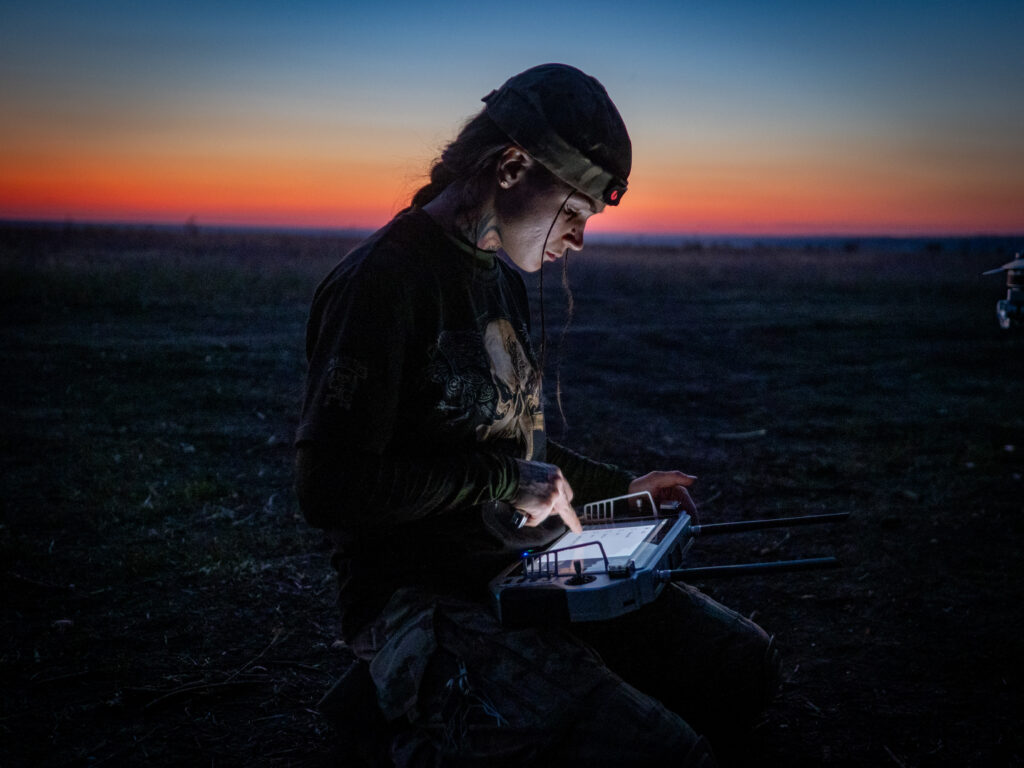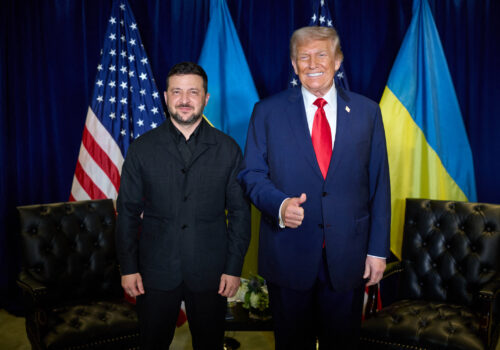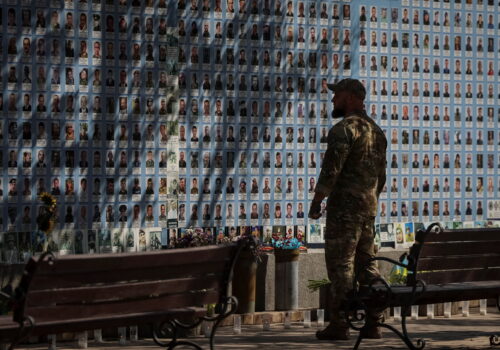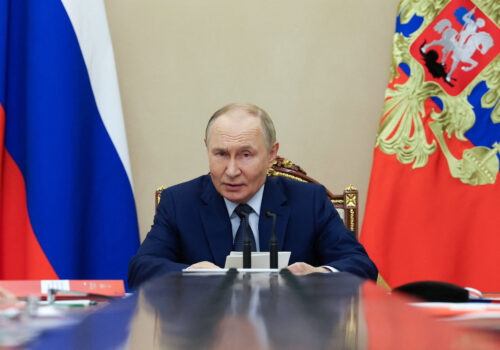The recent escalation in Russian drone incursions across Europe has inadvertently underlined Ukraine’s burgeoning reputation as the continent’s leading practitioner of drone warfare. A number of individual countries including Denmark and Poland have responded to Russia’s provocative actions by seeking to establish joint anti-drone training initiatives with Ukrainian instructors, while Ukraine has featured prominently in the fast-evolving discussion over a collective European defense against Putin’s drones.
Ukraine’s drone warfare prowess was a hot topic at this week’s European Political Community Summit in Copenhagen. “The only expert right now in the world when it comes to anti-drone capacities is Ukraine, because they are fighting the Russian drones almost every day,” Danish Prime Minister Mette Frederiksen commented. “We need to take all the experiences, all the new technology, all the innovation from Ukraine, and incorporate it into our own rearmament.”
NATO Secretary General Mark Rutte agreed with the Danish leader’s assessment of Ukraine’s pivotal role. “Ukraine is a powerhouse when it comes to military innovation and anti-drone technology,” he noted, adding that Ukraine’s readiness to share its insights with the country’s NATO partners was “very important.”
Stay updated
As the world watches the Russian invasion of Ukraine unfold, UkraineAlert delivers the best Atlantic Council expert insight and analysis on Ukraine twice a week directly to your inbox.
Ukraine’s rapid rise to drone superpower status confirms the old adage that necessity is the mother of invention. When Putin first launched the full-scale invasion of Ukraine in February 2022, it was clear that the Ukrainian military could not realistically hope to compete with Russia’s often overwhelming advantages in terms of manpower and conventional firepower. Instead, Kyiv would have to rely on a combination of raw courage and innovative technological solutions.
From the early stages of the war, Ukraine began pioneering the large-scale deployment of drones in combat roles. By 2023, this was enabling Ukrainian commanders to compensate for artillery shell shortages and blunt Russian advances. This emphasis on relatively cheap and highly effective drones has transformed the battlefield and created a kill zone along the front lines that Ukrainians have dubbed the “Drone Wall.”
With drones now ubiquitous above the battlefield, any soldier or vehicle that breaks cover in a zone stretching for many kilometers on either side of the zero line risks becoming an instant target. This has made it extremely challenging to concentrate large quantities of troops and armor, which helps explain the lack of major front line breakthroughs over the past three years.
Ukraine has also employed drone technologies to great effect far beyond the battlefield. Kyiv’s innovative use of marine drones has turned the tide in the Battle of the Black Sea, breaking the Russian blockade of Ukraine’s southern coastline and forcing Putin to withdraw the bulk of his warships from occupied Crimea to the relative safety of Russian ports. More recently, Ukrainian marine drones have been modified to carry anti-aircraft missiles and have reportedly shot down Russian helicopters over the Black Sea. This unprecedented success has revolutionized naval warfare and led to growing global interest in Ukraine’s domestically developed marine drones.
Kyiv has dramatically expanded its long-range drone fleet in recent years as part of a strategy to bring Putin’s invasion home to Russia. As a result, Ukraine has been able to mount a highly effective bombing campaign since August 2025 targeting oil refineries, logistics hubs, and military industrial sites deep inside the Russian Federation. This has led to a fuel crisis across Russia, with some regions forced to introduce gasoline rationing amid supply shortages and record price hikes. Ukraine’s long-range strikes have helped to reshape perceptions of the war and have demonstrated how Kyiv’s technological edge can offset its material disadvantages.
Eurasia Center events

Former Ukrainian Commander in Chief Valerii Zaluzhnyi was one of the architects of Ukraine’s drone warfare doctrine until being relieved of his position in early 2024. In a recent commentary, he argued that innovation must remain the foundation of a sustainable Ukrainian resistance strategy against Russia. Zaluzhnyi stressed that Ukraine’s embrace of drone technologies has helped offset the imbalance between the two countries while inflicting disproportionate costs on the Kremlin. “Ukraine must compensate for its relative lack of resources by constantly introducing military innovations,” he commented.
Ukraine and Russia now find themselves locked in a relentless race to innovate, with the window between the appearance of new weapons systems and the development of effective countermeasures now sometimes reduced to a matter of weeks. The intensity of this competition has turbo-charged Ukraine’s domestic drone industry and propelled it far ahead of its Western counterparts.
If NATO members wish to close this gap, they must lean heavily on the technical and strategic lessons learned by the Ukrainian military over the past three and half years of full-scale drone warfare. Training initiatives are already underway, with President Zelenskyy expressing his readiness to share Ukraine’s experience with more of the country’s NATO partners.
A growing number of countries are also looking to establish joint drone production in order to benefit from Ukrainian defense tech know-how. In late September, Britain announced that it would soon launch the mass production of interceptor drones developed in collaboration with Ukraine. Romania has also recently unveiled ambitious plans to manufacture drones in partnership with Ukraine for domestic use and for potential export to NATO allies. Meanwhile, a Ukrainian delegation is reportedly in the United States this week to negotiate a landmark deal with the Trump administration that would see Kyiv sharing battle-tested drone technology with the US.
The Russian invasion of Ukraine is the world’s first fully fledged drone war and represents a watershed moment in military history. With drones now set to play a dominant role in the wars of the future, Ukraine’s unique experience in this technologically advanced form of warfare makes the country a key partner for NATO and an indispensable ally in the defense of Europe.
David Kirichenko is an associate research fellow at the Henry Jackson Society.
Further reading
The views expressed in UkraineAlert are solely those of the authors and do not necessarily reflect the views of the Atlantic Council, its staff, or its supporters.

The Eurasia Center’s mission is to enhance transatlantic cooperation in promoting stability, democratic values, and prosperity in Eurasia, from Eastern Europe and Turkey in the West to the Caucasus, Russia, and Central Asia in the East.
Follow us on social media
and support our work
Image: Credit Image: © Jana Cavojska/ZUMA Press Wire





